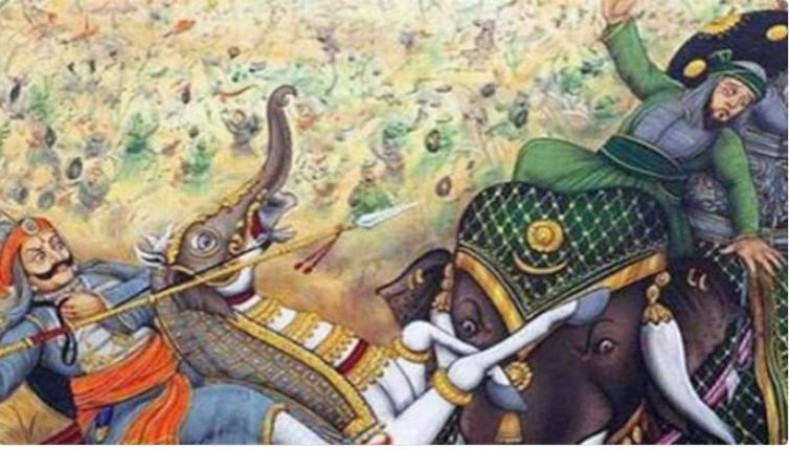
On June 21, 1576, one of the most significant battles in Indian history took place—the Battle of Haldighati. This historic clash pitched the powerful Mughal Empire against the valiant forces of Rana Pratap Singh, the ruler of Mewar in present-day Rajasthan, India. The battle, fought in the picturesque Haldighati Pass, marked a turning point in the struggle for dominance in the region. Let us delve into the details of this monumental confrontation and its repercussions on the history of India.
Background: During the 16th century, the Mughal Empire, under the leadership of Emperor Akbar, had been expanding its territory across the Indian subcontinent. Rana Pratap Singh, a brave Rajput warrior, stood as a formidable obstacle to the Mughals' ambitions. He fiercely resisted Mughal dominance and refused to submit to Akbar's authority. Rana Pratap Singh's defiance and determination to protect his kingdom of Mewar earned him the respect and admiration of his people.
The Battle of Haldighati: The Battle of Haldighati commenced on June 21, 1576, in the Haldighati Pass, located in the Aravalli Mountains of present-day Rajasthan. The Mughal army, led by Man Singh I, a trusted general of Emperor Akbar, heavily outnumbered Rana Pratap Singh's forces. The Mughal forces consisted of a well-organized army comprising skilled archers, artillery, and cavalry. On the other hand, Rana Pratap Singh's army, although significantly smaller in number, was composed of brave Rajput warriors renowned for their courage and valor.
The battle unfolded with the Mughal forces launching a series of fierce attacks on Rana Pratap Singh's army. Despite being outnumbered, the Rajput warriors put up a relentless resistance, displaying exemplary battlefield skills and unmatched bravery. Rana Pratap Singh, mounted on his loyal steed Chetak, led his troops from the front, inspiring them to fight with unwavering determination.
While the Mughal forces initially faced fierce resistance, their superior numbers and weaponry gradually began to take their toll on the Rajput warriors. Rana Pratap Singh found himself surrounded by enemy troops, facing a dire situation. During the chaos of battle, Chetak, Rana Pratap Singh's legendary horse, valiantly fought alongside his master. However, both Rana Pratap Singh and Chetak sustained severe injuries.
Realizing the gravity of the situation, Rana Pratap Singh's loyal followers managed to extricate him from the battlefield and safely retreat to the nearby hills. Although the Mughals emerged victorious in the Battle of Haldighati, their triumph was not without significant losses.
While the Battle of Haldighati resulted in a tactical victory for the Mughal Empire, it failed to achieve its objective of subduing Rana Pratap Singh and the kingdom of Mewar. Rana Pratap Singh, despite the defeat, continued to resist Mughal rule and maintained his independence. His unwavering determination and refusal to surrender made him a legendary figure in Indian history, epitomizing the spirit of Rajput resistance against foreign invaders.
The Battle of Haldighati serves as a testament to the Rajput valor and their indomitable spirit. It became a symbol of resistance against the Mughal Empire's expansionist policies and inspired future generations to fight for their freedom and honor. The fierce determination displayed by the Rajput warriors in the face of overwhelming odds exemplifies their unwavering commitment to protect their land and uphold their traditions. Despite being outnumbered and outmatched, the Rajputs fought with unwavering courage, leaving an everlasting imprint on the pages of history. Their unwavering bravery at Haldighati echoes through time, reminding us of the importance of standing up for one's beliefs and defending one's heritage. This historic battle serves as a source of inspiration, encouraging individuals to cherish their cultural roots and to embrace the spirit of resilience in the face of adversity.